This report summarizes the work on Hydra since April 2023. It serves as preparation for the monthly review meeting (see slides and recording), where the team updates project stakeholders on recent developments to gather their feedback on proposed plans.
Roadmap
This month the team released version 0.10.0 which includes many important features. The project roadmap was only slightly updated this month and already saw one more feature completed:
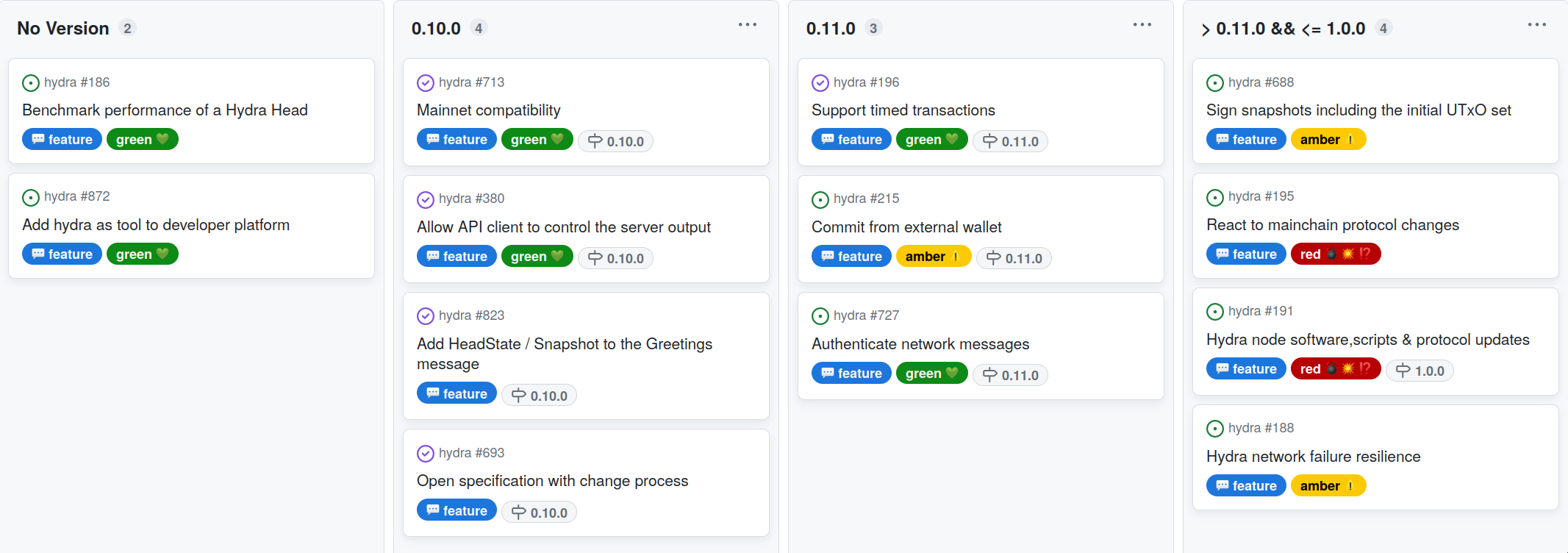
Release 0.10.0
-
First mainnet compatible release of
hydra-nodeincluding technical changes and documentation -
Mainnet exposure currently limited to 100₳ per participant
-
Added some missing features to the client API (short-term solutions)
-
Some quality of life improvements in running the
hydra-node -
Full release notes and a list of delivered features
Notable roadmap updates
-
Got new input and a concrete scenario for benchmarking (off-chain) performance of a Hydra head. As it is a very basic one, we moved the item from an idea to a feature and started work on it.
-
Added a new feature item to add Hydra as a tool to developer platforms within our agenda of promoting Hydra as an open-source platform for scalability on Cardano.
-
Already completed a first feature for 0.11.0 and considering whether to release it as early as possible with latest advances.
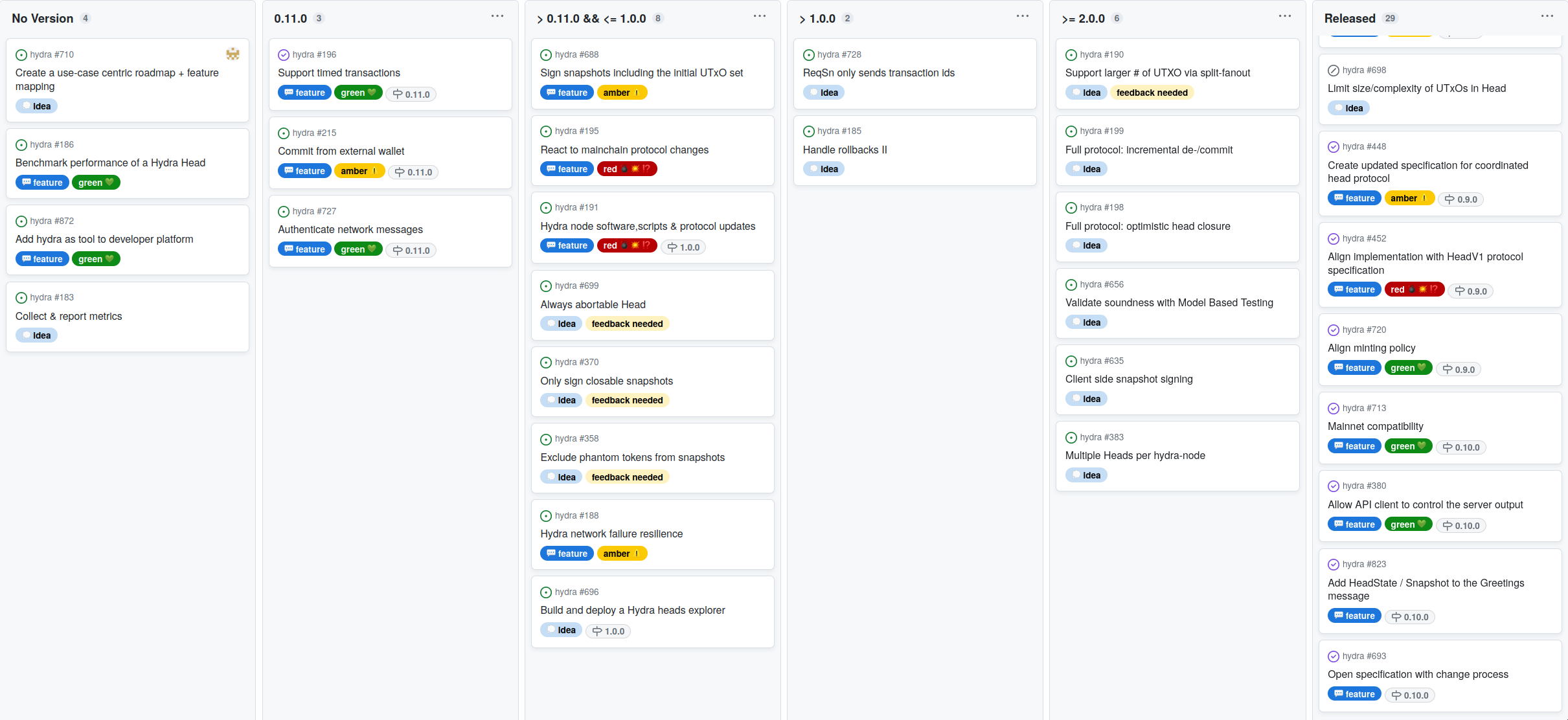
Development
Issues and pull requests closed since last report
This month, the team worked on the following:
Timed transactions #196
To realize the Hydra Head protocol, a hydra-node observes and follows the
chain progress on the layer 1 (L1). Until now, this component was only observing
protocol related transactions. Now, on every block roll forward, a Tick event
carrying the notion of time from L1 is observed by the hydra-node and is used
to validate transactions in a Hydra head. This means that clients can submit
time bounded transactions to an open head and expect them to be validated using
the same slot that would be used on L1. It is important to mention that time
only advances on L1 when a block is produced.
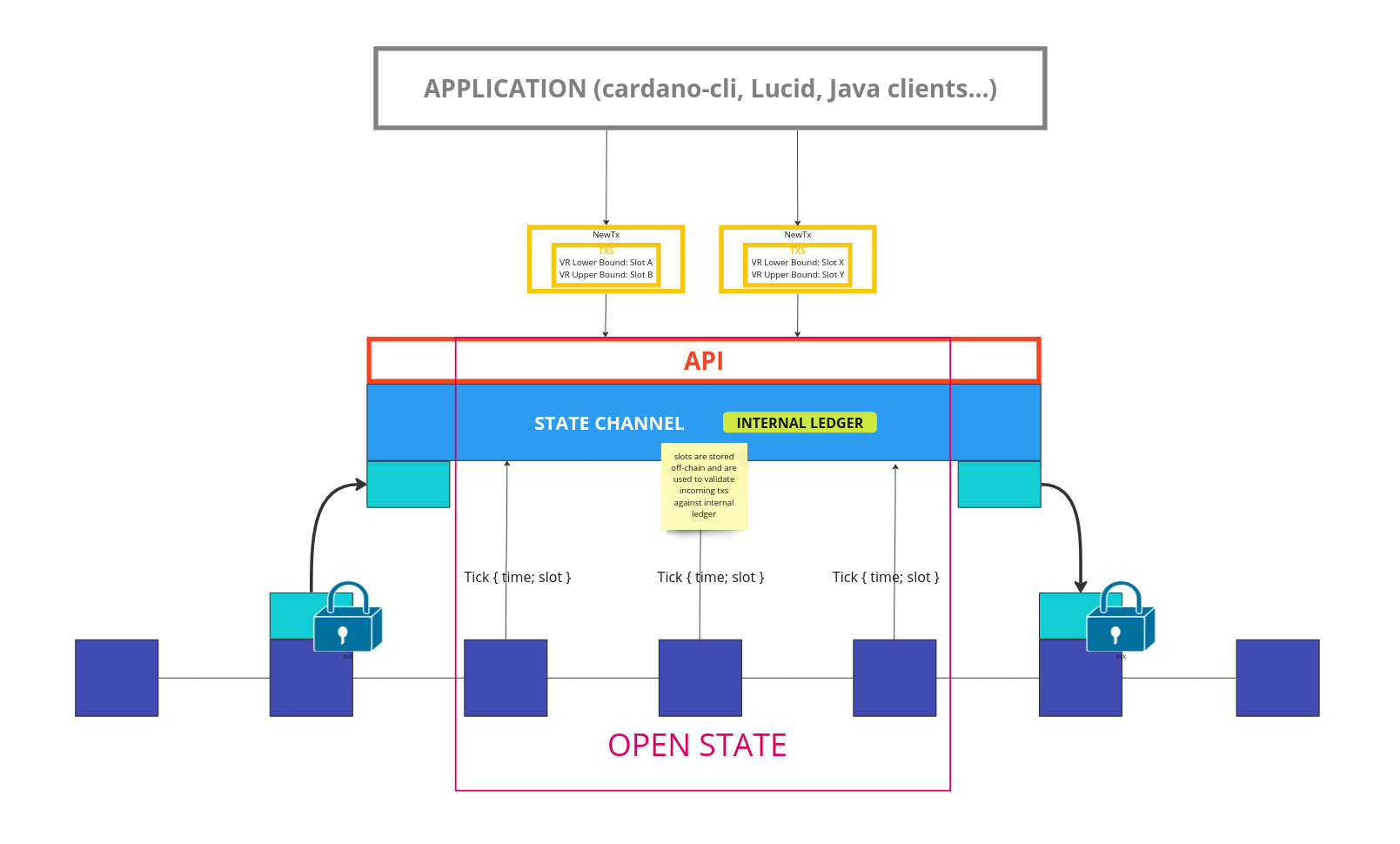
This feature will make the Hydra L2 ledger now en-par with UTXO features
available on the Cardano L1. A logical next step in this direction could be to
make time in the state channel advance every configured slotLength (e.g. every
second) using the system clock in between blocks as a form of dead reckoning.
Removing --ledger-genesis #863
The hydra-node had two command line options to configure the ledger used for validating layer 2 (L2) transactions: --ledger-protocol-parameters and --ledger-genesis. The former option, which is self-explanatory, allows configuration of the Cardano protocol parameters to be used. Often, the same parameters as those on L1 are configured, or similar parameters with reduced fees, for example. On the other hand, the second option required the genesis-shelley.json file previously used to initialize the Shelley era by the cardano-node.
When we started using the current slot in the L2 ledger (see above), we realized
that only the start time and slot length are effectively used from that
configuration file. Moreover, it would be quite surprising if those were
different and slots would be longer or shorter on L2 (unless explicitly
configured). We opted to remove the option altogether and have the hydra-node
fetch the genesis parameters from the Cardano network. This makes the system
easier to configure and more isomorphic to L1.
Improving CI runtime
The Hydra project embraces Test Driven Development and implements Continuous Integration (CI), checking all these tests pass and more.
The CI could sometimes take as long as an hour or more to run, which has a negative impact on the project's workflow. For instance, all the project's branches have to be fast-forward with master before being merged. So if all the tests on a branch are green and the pull request has been approved but is lagging a bit behind master, it has to be rebased, so the CI has to run again, incurring a one hour or so delay in this case before being able to merge it. The situation becomes worse when several pull requests are ready to be merged.
Analyzing the run from May, 10th we can see that:
- Building and testing takes 19 minutes for the longest
- Generating haddock documentation and running the benchmarks takes 28 minutes for the longest
- Documentation (which will need artifacts generated in previous steps) will take 14 minutes
- In total, this run took 1 hour and 16 minutes.
Let's focus on the build and the testing stage first. We're expecting the plutus-merkle-tree to run fast but it took 8 minutes and 52 seconds , 7m and 11 seconds being spent setting up the build environment. In other words, 81% of the build time is downloading binary dependencies from some nix cache.
Compiling the code requires cabal and other nix dependencies that will trigger massive downloads. Instead, let's, straight on, run the tests with nix and let nix decide what needs to be compiled. Sometimes, most of the code will not have changed and the test binary will already be available in some nix cache to be run without any compilation step.
This has been done in #867. Merging this PR, the build on master took 45 minutes and, specifically, the same plutus-merkle-tree job only took 1 minute and 44 seconds, only 20% of the time observed before.
Then, let's focus on documentation (14 minutes). Most of the time spent by this process is website optimization. It makes sense for the documentation that will actually be published on the website (master or release). But what about all the builds in branches for which the website will never be published? We need to keep this documentation step in branches because it gives us sanity checks, preventing broken links, for instance. But we can definitely remove the optimization step.
This has been done in #880 and it saves 10 minutes from this step.
Our first goal was to reduce CI execution time when pushing on branches and this has been improved. We're now having execution time significantly under 30 minutes where it used to be 45 minutes or even an hour.
We had some issues with compilation output, obfuscated by nix, which have been solved by #889.
Every morning, we rebuild our master branch and we can observe the whole execution time on the following graph (in seconds):
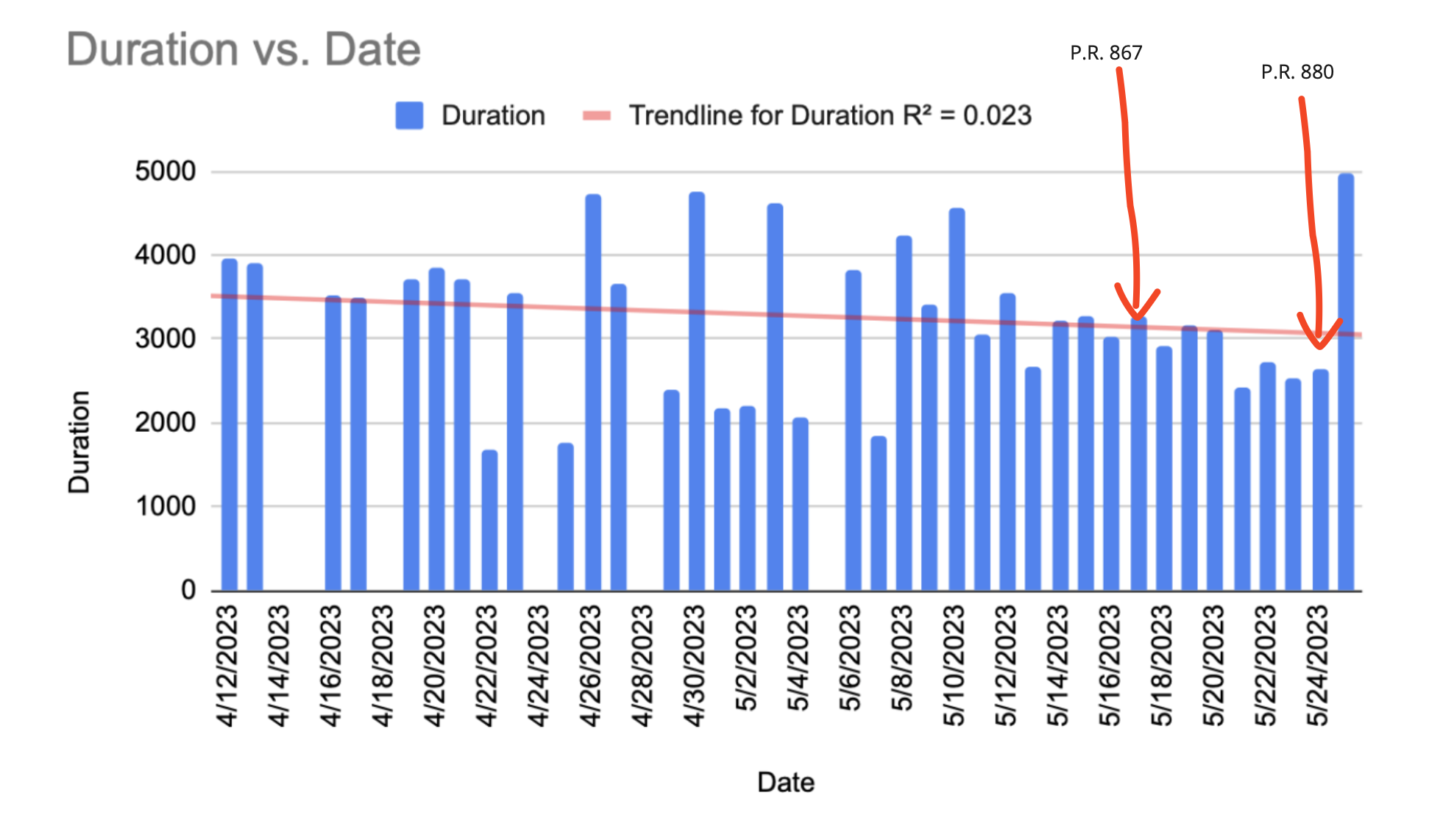
Although we observed performance improvements on branches CI execution time, master execution time has not been reduced that much. We may save 10 minutes from the documentation step because optimizing the unstable documentation is maybe not worthwhile. But what's more problematic here is the process variability.
This variability can be explained by nix cache misses. That's something we need to investigate. It's hard to optimize a process with buffers, especially here where in case of a cache miss, recompilation has to happen and takes time. So every cache miss introduces several minutes of overhead which explains why we observe so much variation between two days with this master execution time.
Next steps:
- Inspect why we have an unexpected random cache miss
- Improve haddock generation time (15 minutes)
- Reduce bench time (we probably don't want to run the whole benchmark suite for every single commit, or a smaller one)
- Focus on the changed area (do not compile everything to generate the monthly report)
Community
Hydrozoa #850
This month, the project saw a new kind of contribution from the community. @GeorgeFlerovsky has written a research piece about an adaptation of the (Coordinated) Hydra Head protocol into a new flavor - Hydrozoa. The article is currently being examined and discussed on GitHub. Feedback so far has been positive. Of course, one does not simply change the Hydra Head protocol (pun intended), but the ideas contained could drive evolution and be followed up with concrete protocol extensions. Very much like the ideas presented in the original paper.
Hydra for Payments project update
In this collaborative effort between IOG and ObsidianSystems, we are pushing the frontiers of using Hydra in payment use cases. It will lower the entry barrier for developers and ultimately users to leverage Hydra L2 for sending and receiving ada and Cardano native assets with very low fees and sub-second finality.
The project is in its second phase where the open-source hydra-pay library is being expanded with necessary features while the team pushes for building a dedicated mobile application.
With the recently released hydra-pay version
0.2.0, an
end-to-end workflow of the Android App nicknamed "HydraNow" can be realized.
This app will act as a layer 2 wallet quite like a Bitcoin Lightning Wallet and
drives feature development in both hydra-pay and hydra in the background.
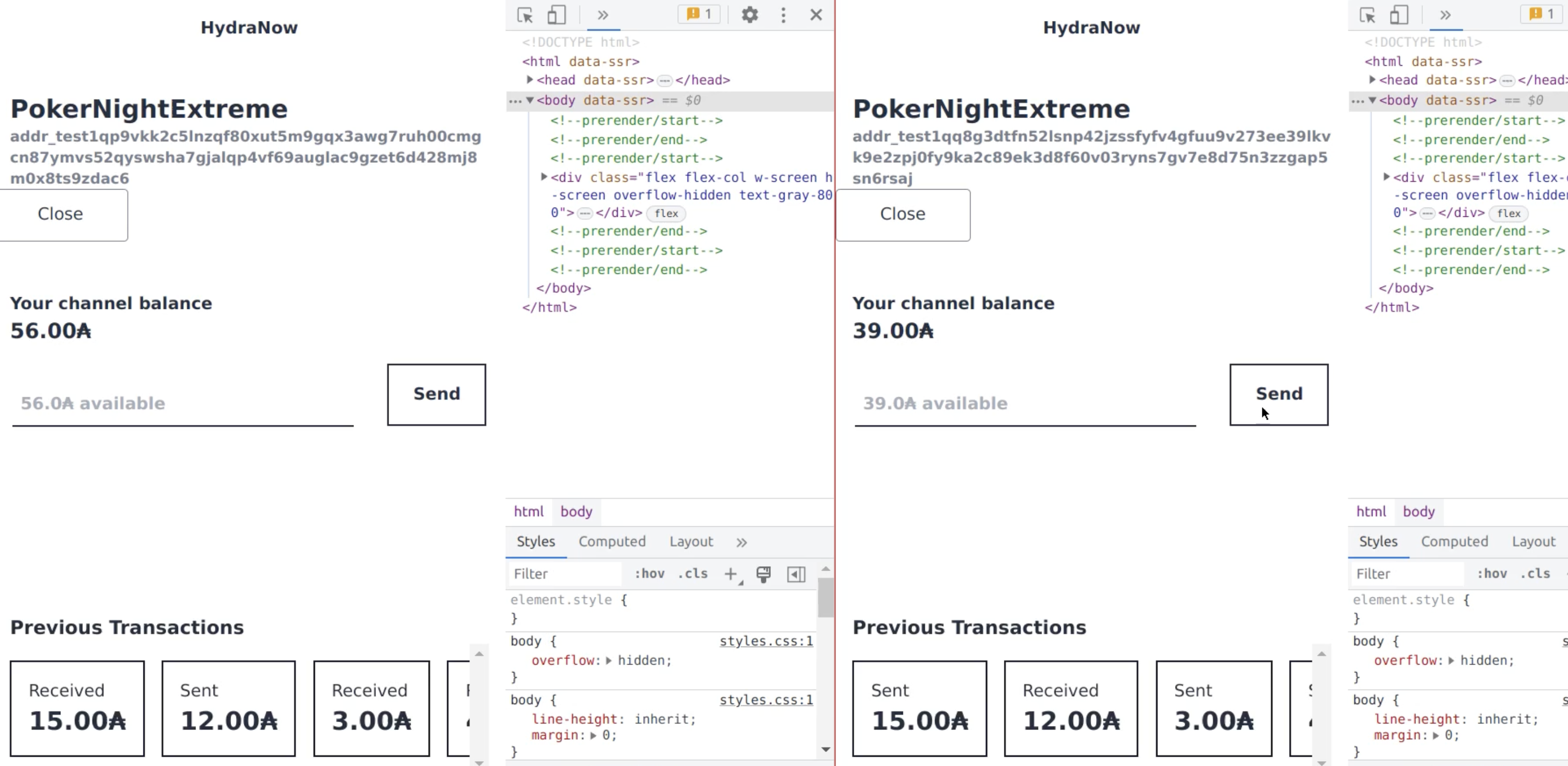
Spanish translation
Last, but not least, we would like to thank @Agustinblockchain for their contribution of a Spanish translation #866 of the hydra.family website 🇪🇸 🎉
Conclusion
The monthly review meeting for May was held on 2023-05-24 via Google Meet with these slides and here is the recording.
The monthly review meeting was lively and we had stakeholders from IOG as well as interested community members join. They were well served by two very nice demos shown by ObsidianSystems and IOG teams.
After having dealt with some issues last month, we are happy to have the first mainnet-capable version released and have already another feature completed this month.
It is great to see that more and more contributors from the community are stepping up to become advocates of the technology. A community is forming and we realize that the project could need some help from someone dedicated to keep track of all the great things happening. What a great problem to have!


